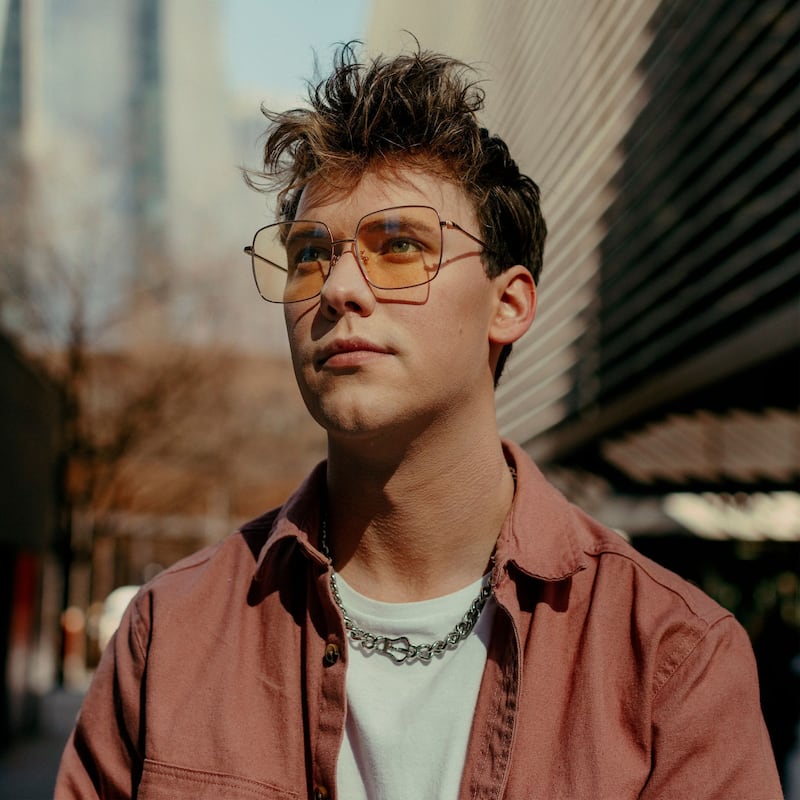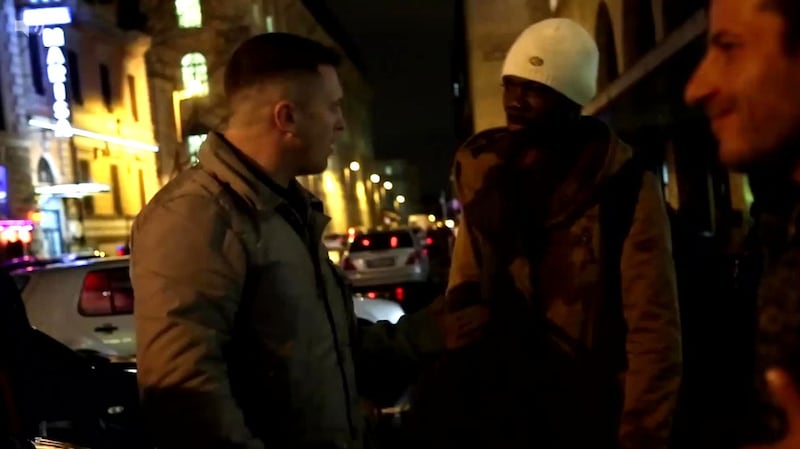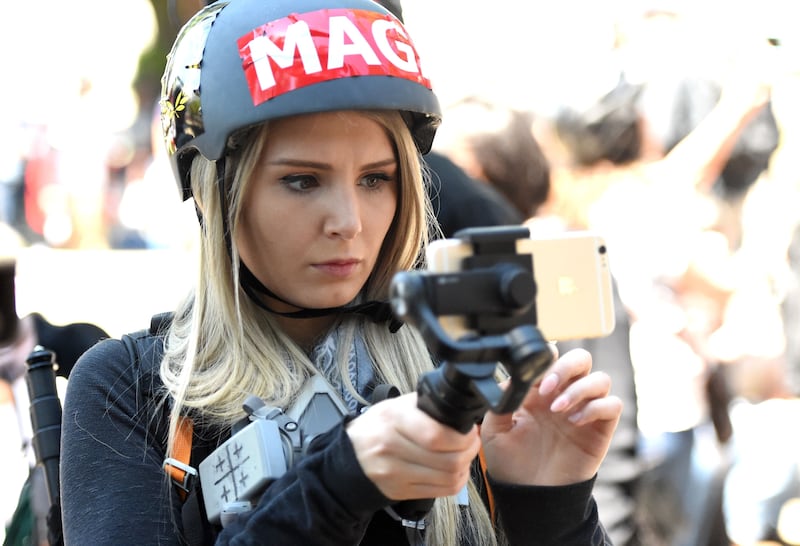In 2018 the far-right British activist Tommy Robinson posted a video on YouTube claiming that he had been attacked by an African migrant in Rome. The thumbnail image and eight-word title promoting the video indicated that Robinson was assaulted by a black man outside a train station. Then, in the video, Robinson punched the man in the jaw, dropping him to the ground. The video was viewed more than 2.8 million times, and it prompted news stories across the right-wing tabloids in Britain, where Robinson was rapidly gaining notoriety for his anti-immigrant and anti-Islamic views.
For Caolan Robertson, an Irish-born film-maker who worked for Robinson and helped create the video, it was an instructional moment. It showed the key ingredients needed to attract attention on YouTube and other social-media services. The video played into anti-immigrant sentiments in Britain and across Europe. It also focused squarely on conflict, cutting rapidly between shouts and shoves before showing Robinson's punch. It also misrepresented what had actually happened.
We would choose the most dramatic moment – or fake it and make it look more dramatic. We realised that if we wanted a future on YouTube it had to be driven by confrontation
“We would choose the most dramatic moment – or fake it and make it look more dramatic,” Robertson, who is 25, and grew up in Ireland, says. “We realised that if we wanted a future on YouTube it had to be driven by confrontation. Every time we did that kind of thing it would explode well beyond anything else.”
Robertson would go on to produce videos for a who's who of right-wing YouTube personalities on both sides of the Atlantic, including Lauren Southern, Stefan Molyneux and Alex Jones. The videos were tailored for the "echo chamber" that is often created by social media networks like YouTube. To keep you watching, YouTube serves up videos similar to those you have watched before. But the longer someone watches, the more extreme the videos can become.
"It can create these very radical people who are like gurus," says Guillaume Chaslot, a former YouTube engineer who has been critical of the way the company's algorithms pushed people to extreme content. "In terms of watch time, a guru is wonderful."
Tech companies, regulators and individuals across the globe are struggling to understand and control the enormous power of YouTube and other social media services. In 2019, YouTube made “important changes to how we recommend videos and prevent the spread of misinformation and hateful content,” Farshad Shadloo, a spokesperson for the company, says. It barred Molyneaux and Jones. But extreme videos continue to spread.

In time, Robertson says, he realised that the videos he worked on stoked dangerous hatred. And in 2019, at a conference in Britain run by a left-wing newspaper, the Byline Times, Robertson distanced himself from his work with the far-right. His change of heart was met with some scepticism. "He was presented as a prodigal son," says Louise Raw, an anti-fascist activist who was onstage for Robertson's mea culpa. "But he has not been held to account."
Now Robertson is detailing the ways he and his collaborators searched for confrontations to gain popularity on YouTube. Efforts to contact Robinson by the New York Times were unsuccessful, and Jones did not respond to multiple requests for comment. Southern says she should not be described as a far-right activist, saying she is merely a conservative. She was not involved in “some horrible far-right grift that tried to deceive people into watching our content”, she adds. “We were just doing what any other YouTuber does.”
Raw footage of the episode in Rome, provided by Robertson, shows that the YouTube video was edited to give the false impression that Robinson was threatened. The full footage shows he was the aggressor.

When the man noticed he was being filmed from across the street, he approached the camera, and Robinson shoved him into an oncoming car. As the man protested, called Robinson crazy and told him to live his own life, Robinson escalated the argument. “There’s one way this is going to go,” he told the man. “You’re going to end up knocked down unconscious.”
Over the more than two years he helped produce and publish videos for Robinson and others, Robertson learned how making clever edits and focusing on confrontation could help draw millions of views on YouTube and other services. He also learned how YouTube’s recommendation algorithm often nudged people towards extreme videos. “It meant that we did more and more extreme videos,” Robertson says.
After his parents divorced, Robertson moved with his father to a predominantly working-class area in the north of England. Realising from a very young age that he is gay, he often felt like an outsider. But he says he encountered more overt homophobia when he moved to London for college and walked through the largely Muslim neighbourhoods in the East End of the city.
After the 2016 shooting at a gay nightclub in Orlando, Florida, where a Muslim man pledging loyalty to the Islamic State group killed 49 people and wounded 53 more, Robertson developed an extreme animosity toward Muslims, particularly immigrants. His anger was fuelled in large part, he says, by videos he watched on YouTube.
It appears in the videos that we are just trying to figure out what is going on, gather information, understand people. But, really, we were trying to find the most incendiary way of making them mad
He began watching videos from mainstream outlets, like an episode of the HBO show Real Time with Bill Maher in which Sam Harris, an author and podcast host, advocated greater criticism of Muslim beliefs. YouTube's recommendation algorithm suggested more extreme videos involving personalities like Robinson, a former member of the neofascist and white nationalist British National Party who was born Stephen Yaxley-Lennon.
In 2017 Robertson contacted Robinson and soon began working with him as a video producer. By the end of the year he was also collaborating with Southern, an activist from Canada. Knowing what garnered the most attention on YouTube, Robertson says, he and Southern would devise public appearances meant to generate conflict. That December they attended a women’s march in London and, with Southern playing the part of a television reporter, approached each woman with the same four-word question: “Women’s rights or Islam?”
They often received a confused, measured or polite response, according to Robertson. They continued to ask the question and sharpened it. Southern, for example, said it would be difficult for Muslim women to answer the question because their husbands would not let them attend the march. That caused anger to build in the crowd.
“It appears in the videos that we are just trying to figure out what is going on, gather information, understand people,” Robertson says. “But, really, we were trying to find the most incendiary way of making them mad.”

The thumbnail image for the YouTube video was indicative of a confrontation: a woman screaming as Southern walked away. As he often did, Robertson sharpened the video’s visual contrast – lightening the white colours and darkening the blacks – to subtly make the scene seem more dramatic.
Southern describes the situation differently. “We asked the question because we knew it was going to force people to question their own political views and realise the contradiction in being a hard-core feminist but also supporting a religion that, quite frankly, has questionable practices around women,” she says. And, she adds, they used video techniques that any media company would use.
The next year Robertson and Southern travelled as far as South Africa, Australia and New Zealand to create similar videos. Over the lifetime of Southern’s YouTube channel, according to channel statistics, her videos were viewed more than 63 million times.
More than 71 per cent of people who viewed these videos had not subscribed to her YouTube channel. In 2018, at the height of her popularity, at least 30 per cent of the views occurred after the videos were automatically recommended to the viewer by YouTube’s algorithms.
Molyneux shied away from the kind of conflict that Southern embraced. He fashioned himself as an online philosopher. But the material Robertson edited slipped in “far-right ideas that appealed to the ethnonationalists – the extreme right-wing audience” he says.
In 2018 the pair travelled to Poland for a video that painted the country as a place free of hardship and strife. The subtext was that was because Poland is predominantly white. In an email, Molyneux says, “It was nice being in a country wherein I didn’t have to hire protective security.” He adds that he felt the same way when he visited Hong Kong.
By early 2019, Robertson says, he grew disillusioned. There was a noticeable drop in traffic on Southern’s YouTube channel. Around the same time, YouTube began to remove more videos the company thought encouraged violence and spread misinformation.
After an Australian man killed 51 people at two mosques in Christchurch, New Zealand – driven in part by anti-immigrant beliefs propagated by YouTube – Robertson realised, he says, that the videos he had made led to the same kind of violence in the Orlando nightclub in 2016. “I felt like I had gone full circle that day.”
Now Robertson oversees Byline TV, a video offshoot of the Byline Times. He also runs a new organisation, Future of Freedom, which seeks to deradicalise right-wing extremists. He is still counting YouTube views. Robertson recently boasted in a text that in one day a video targeting Jones, the conspiracy theorist he once worked with, had been viewed more than 250,000 times. – New York Times


















